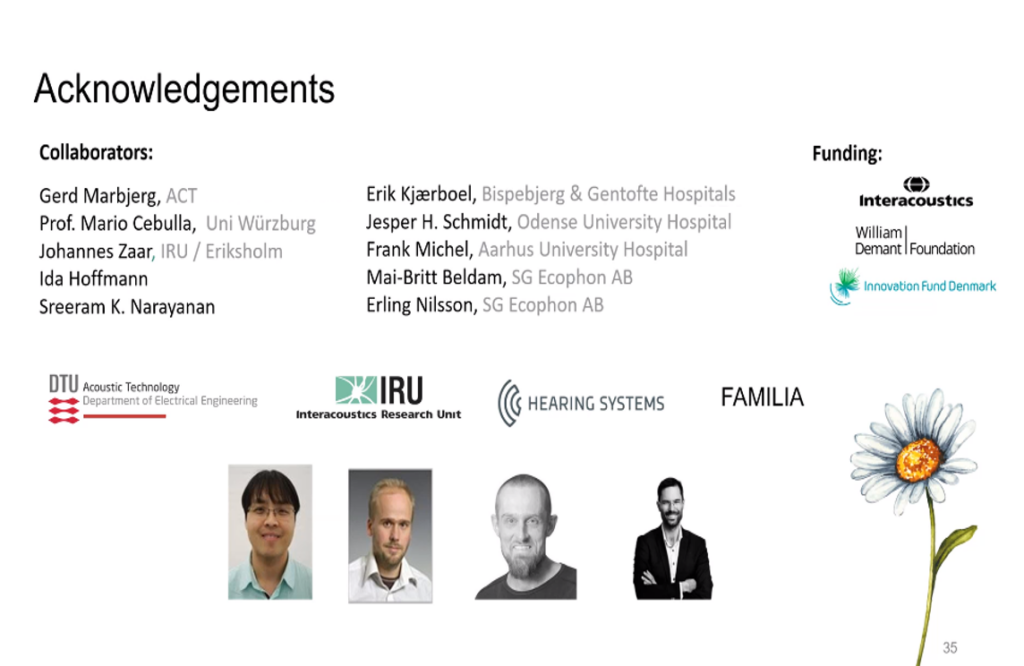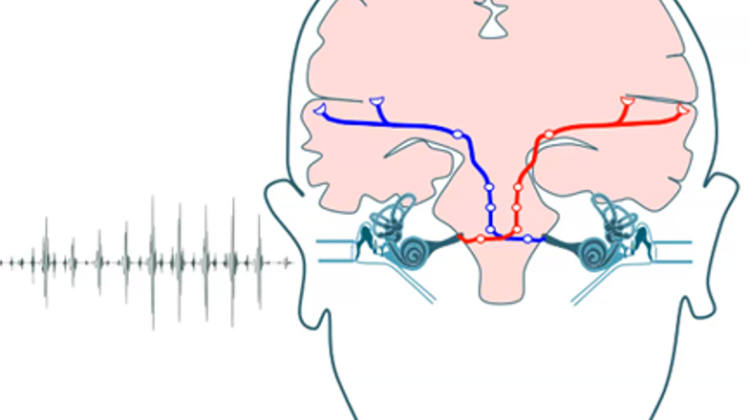
PhD defense, effect of room acoustics
Thursday the 28th of May 2020, Valentina Zapata-Rodriguez defended her PhD at DTU. Because of the Corona situation the PhD defense was planned to be online (on Teams) and I am impressed by the way Valentina handled this. Normally, you can interact with the audience and the committee in an auditorium – but Valentina pulled it off beautifully. Even technical problems were handled calmly and it was a pleasure to be in the audience this day. (Read more about Valentina and her research here).
NB. All the pictures in this article is taken from Valentina Zapata-Rodriguez’ PhD defense (ppt. presentation online).
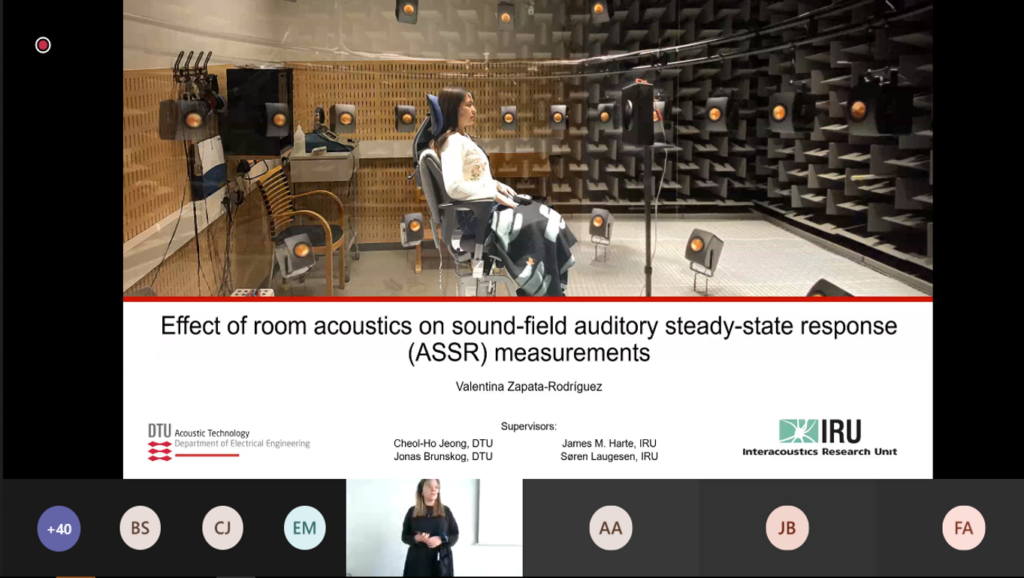
Hearing loss in infants
Newborn hearing screening programs all over the world are done to identify hearing loss at the earliest stage possible and often leads to clinical interventions < 3 months. Because of these programs many pre-lingual infants are fitted with hearing aids that allow them to develop communication skills.
Early diagnosis is crucial for the child’s auditory rehabilitation and the key to a successful adequate sound stimulation is an efficient hearing air fitting. Objective methods for hearing aid fitting validation in infants is definitely needed!
Secure speech sounds
The validation of hearing air fittings is crucial because it secures that the child receives the correct amplification and most importantly has access to speech sounds. If the infant cannot hear the speech sounds it will be impossible to mimic what he/she hears and the communication skills will be challenged.
Valentina marks that standard audiological measurements like visual reinforcement audiometry are highly unreliable on infants younger than 8 months since they require active participation of the child (try to control a 6-month old baby!) and therefore sound-field steady-state response (ASSR) has been suggested as a potential clinical test for the validation of the hearing aid fitting.
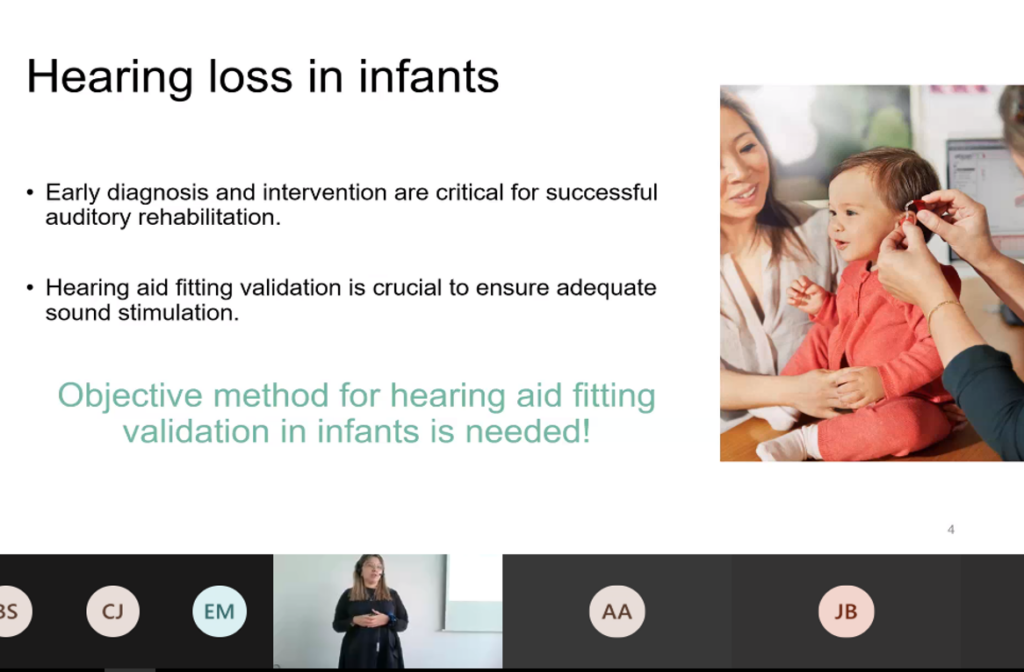
ASSR
ASSR is an objective electrophysiological method where the stimulus is presented through a loudspeaker to include the hearing aid in the signal path.
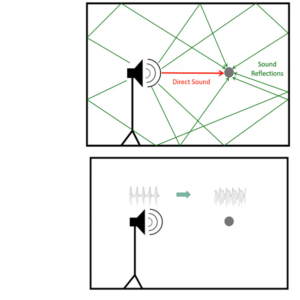
The method allows the doctor/clinician to validate the fitting of the hearing aid under normal conditions and this test measures the potential caused by auditory neurons that follow a repeated stimulus through the loudspeaker.
Since this method takes place in a ‘real room’ (audiometric room in a clinic/hospital) there are some challenges. Both the envelope and modulation of the stimulus can be affected the room acoustics – e.g. the reverberation time of the room. This is what Valentina has investigated in her PhD.
The role of room acoustics
If we look at audiometric testing rooms, there are some differences in the local standards – from country to country, and these standards are often ‘only’ set for healthcare facilities (not specialized audiometric rooms). There exists only one particular standard for sound field audiometry – which is the BSA 2019: Acoustics of sound field audiometry (BSA = The British Society of Audiology).
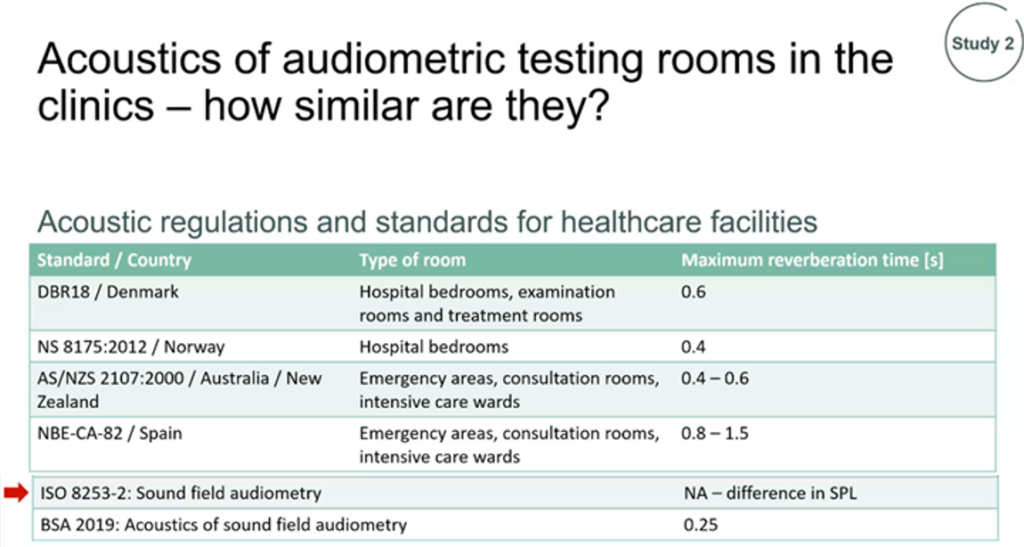
In her research, Valentina collected room acoustic data on 29 audiometric rooms from Denmark (Århus University Hospital, Bispebjerg Hospital, Gentofte Hospital, Odense University Hospital and Interacoustics) and 2 rooms from Germany (ENT Clinic of the Julius Maximilians-University and Karl-Kroiss-Schule) and there was a big variety in the acoustic performance of the rooms (the research focus was on Early decay time – EDT, and reverberation time, RT on 707 Hz, 2000 Hz and 4000 Hz).

Instead of testing how room acoustics affects sound field ASSR measurements in the actual audiometric rooms, Valentina investigated the effect of the room acoustics in a loudspeaker–based virtual acoustic environment using accurate acoustic simulation. This was done systematically and with the help from PARISM (Phased Acoustics Radiosity and Image Source Method – read more about PARISM here).
Results and conclusions
The scope of the PhD was to investigate if and how room acoustics affects sound field ASSR measurements and the practical implications for its potential clinical implementation. It was also investigated if the room-induced variation in ASSR level could be predicted by using 2 acoustic descriptors: EDT (early decay time) and a proposed auditory-model-inspired relative modulation power metric.
To start backwards – it was demonstrated that is was possible to predict the variation in ASSR level using EDT and relative modulation power and it showed that EDT was the best descriptor for 707 and 2000 Hz whereas the Relative modulation power was the best descriptor for 4000 Hz.
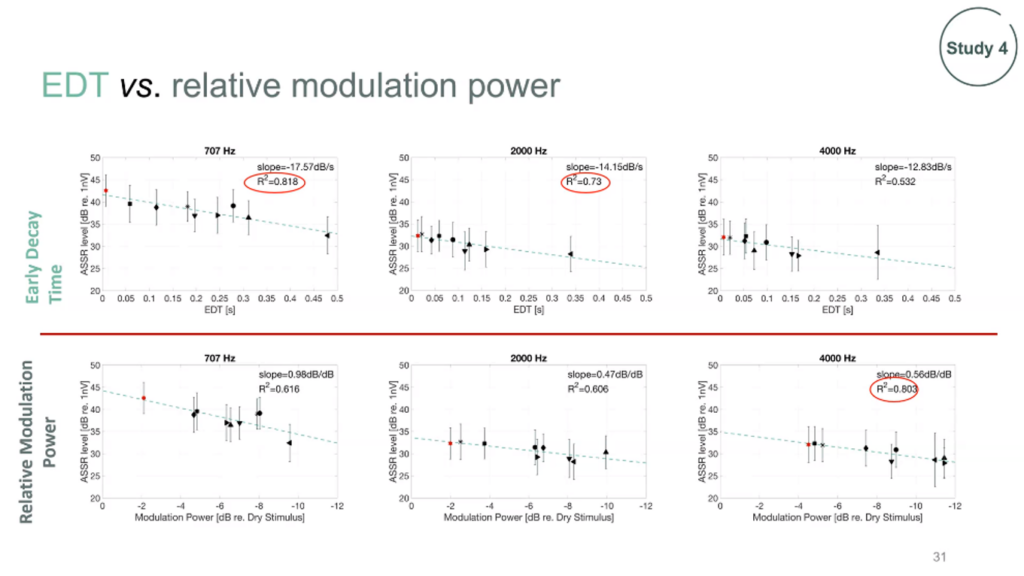
To the question if there was an effect of room acoustics on the ASSR level, the answer was yes. According to Valentina’s findings and even though sound field ASSR measurements could be generally conducted in the existing audiometric rooms, care should be taken when selecting the room and testing positions. The effect of the room acoustics will in some cases compromise the viability of the test. Room acoustics matter!
Besides Valentina and the online audience, the following were part of the defense:
Supervisor:
- Associate Professor Cheol-Ho Jeong
- Associate Professor Jonas Brunskog
- James Harte, Senior director, IRU: Interacoustics Research Unit
- Søren Laugesen, Senior research engineer, IRU
Examiners:
- Associate Professor Ewen MacDonald, DTU Health
- Associate Professor Steven Bell, University of Southampton
- Associate Professor Arianna Astolfi, Politecnico di Torino
Chairperson at defence: Associate Professor Finn T. Agerkvist
